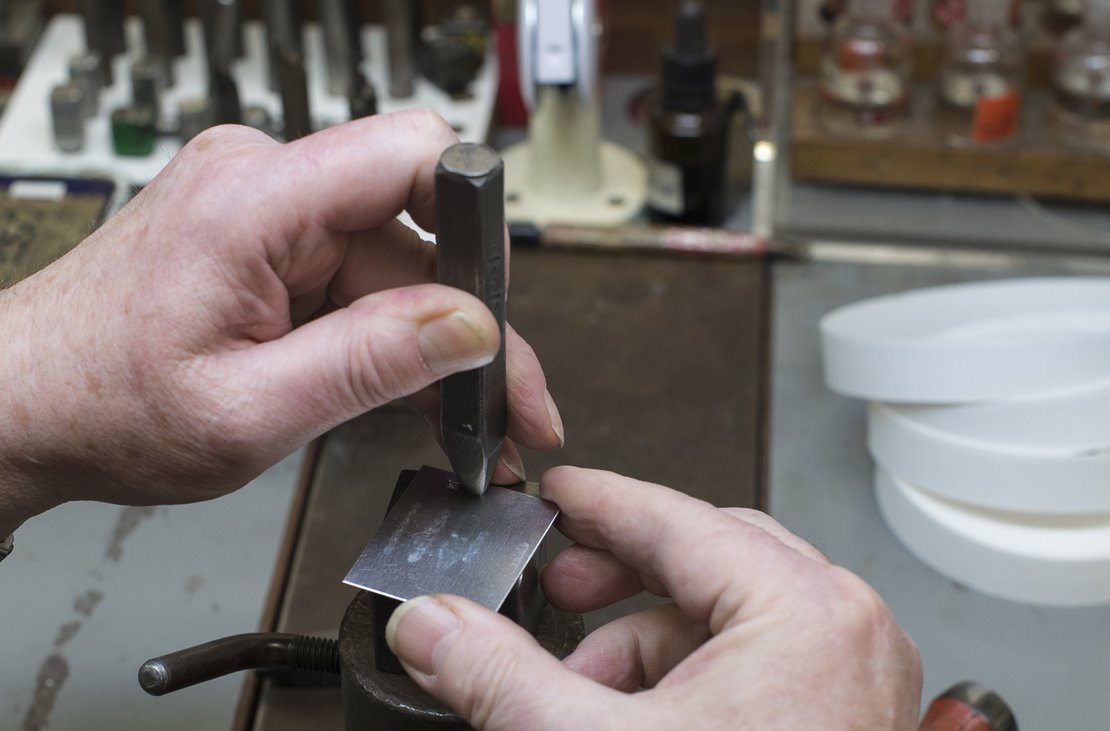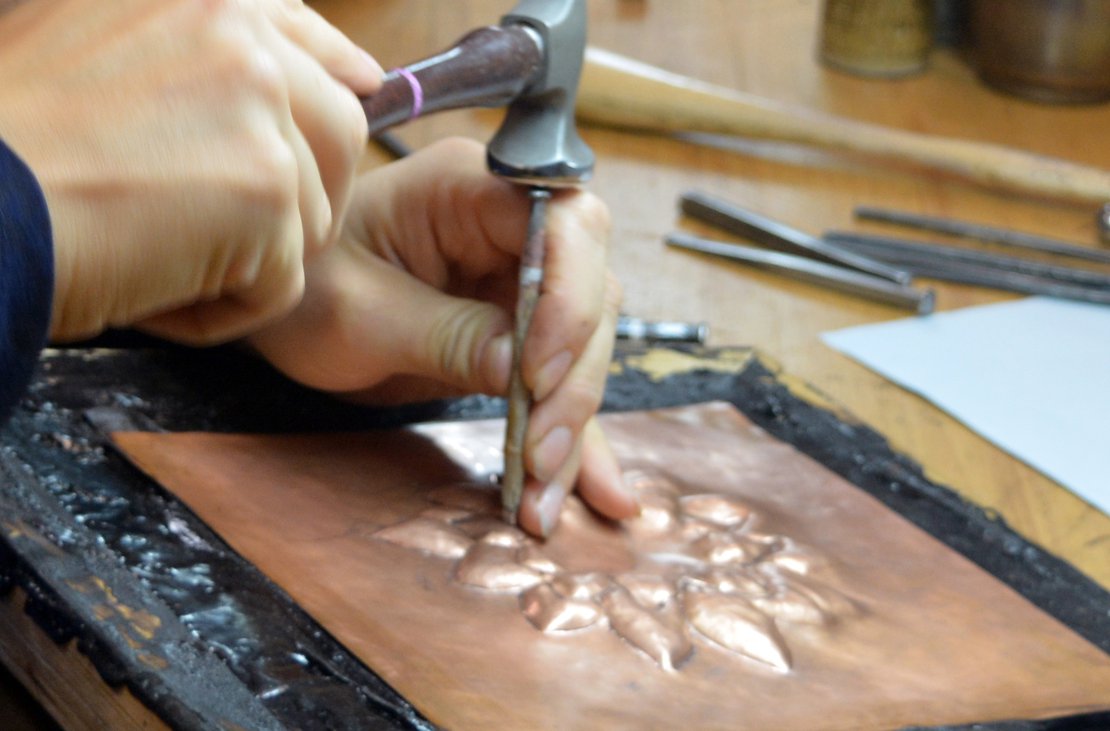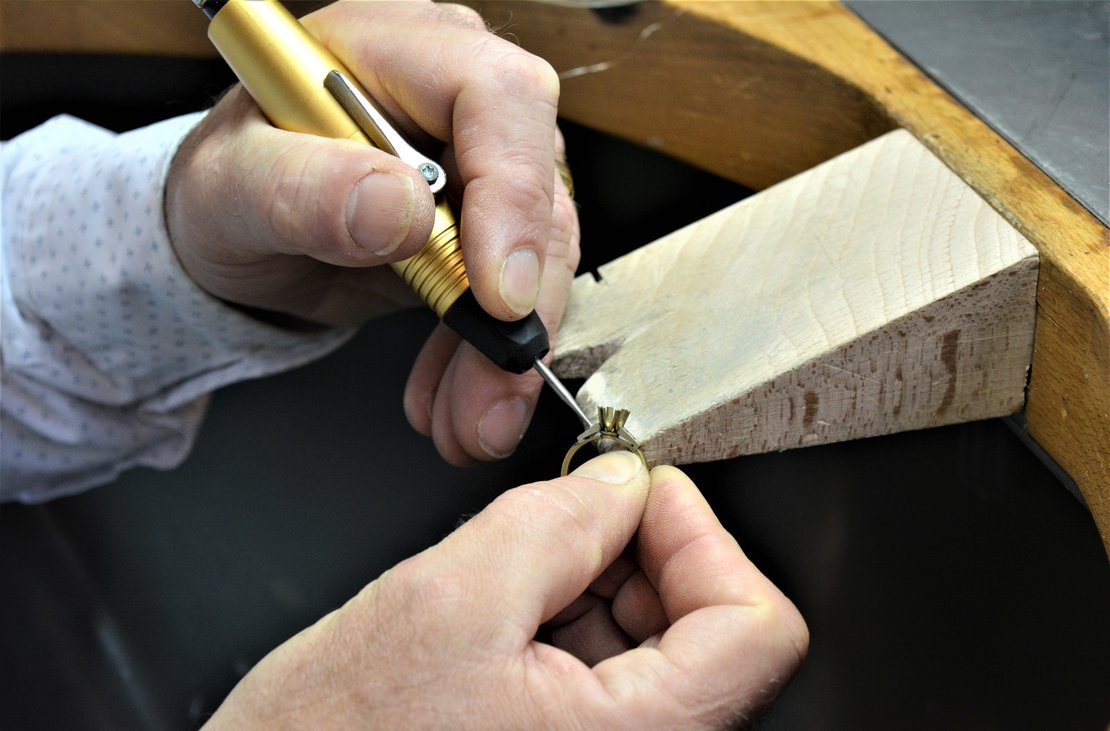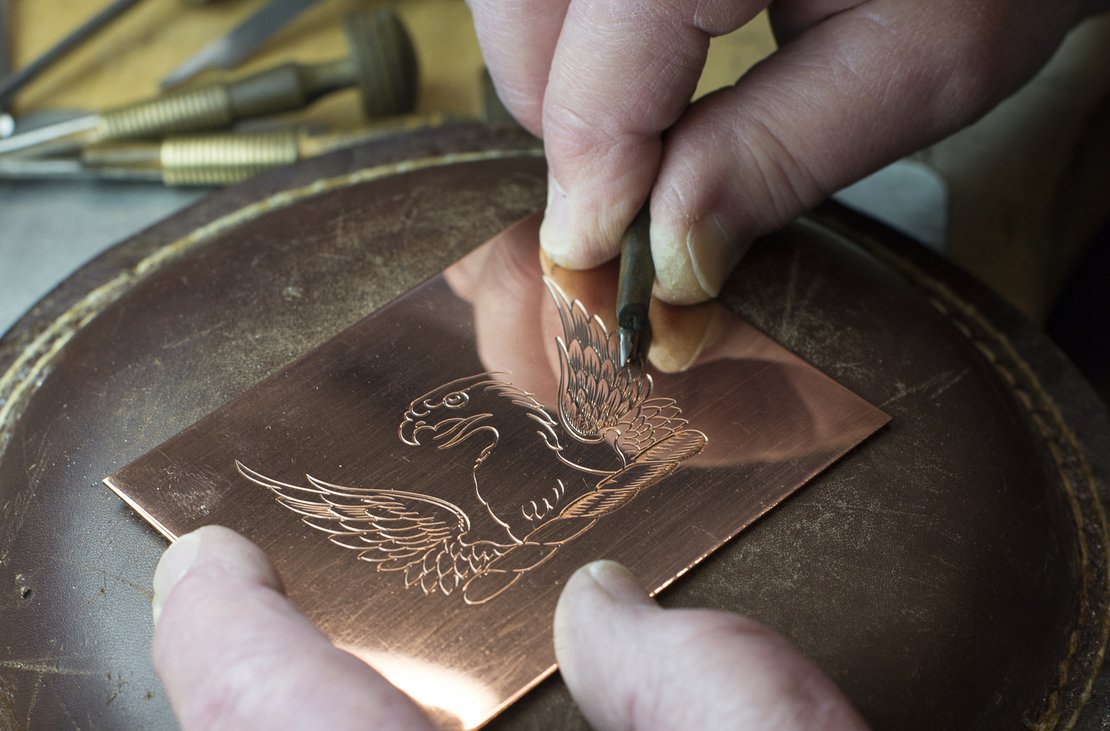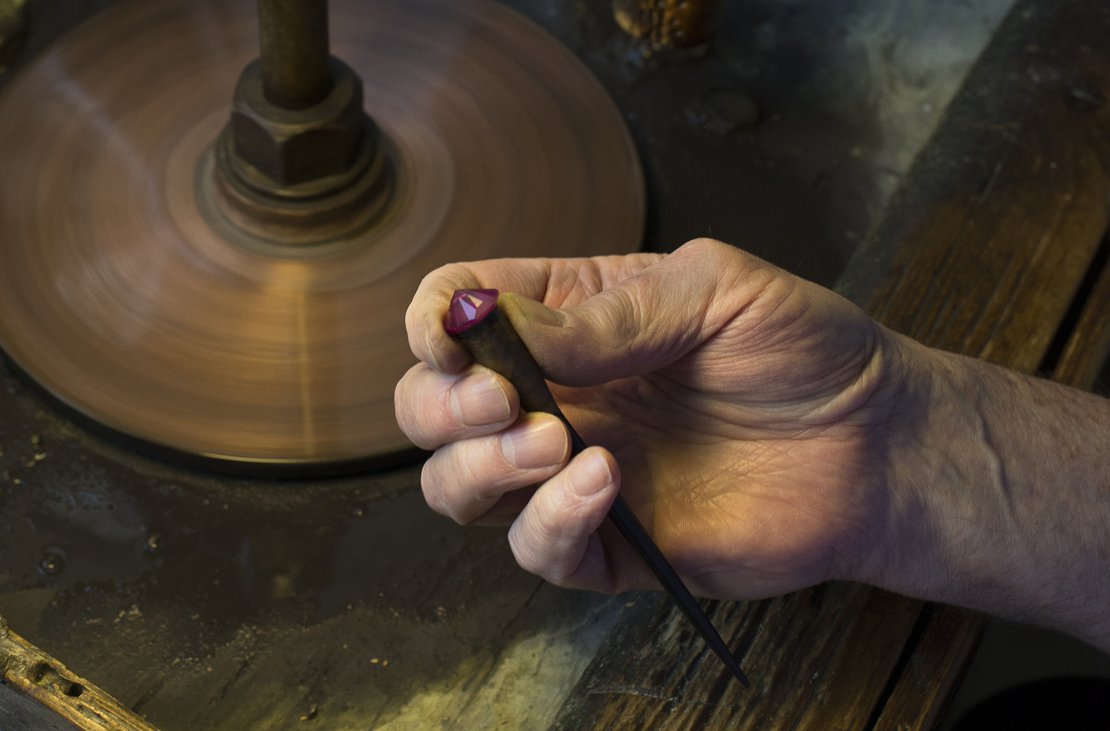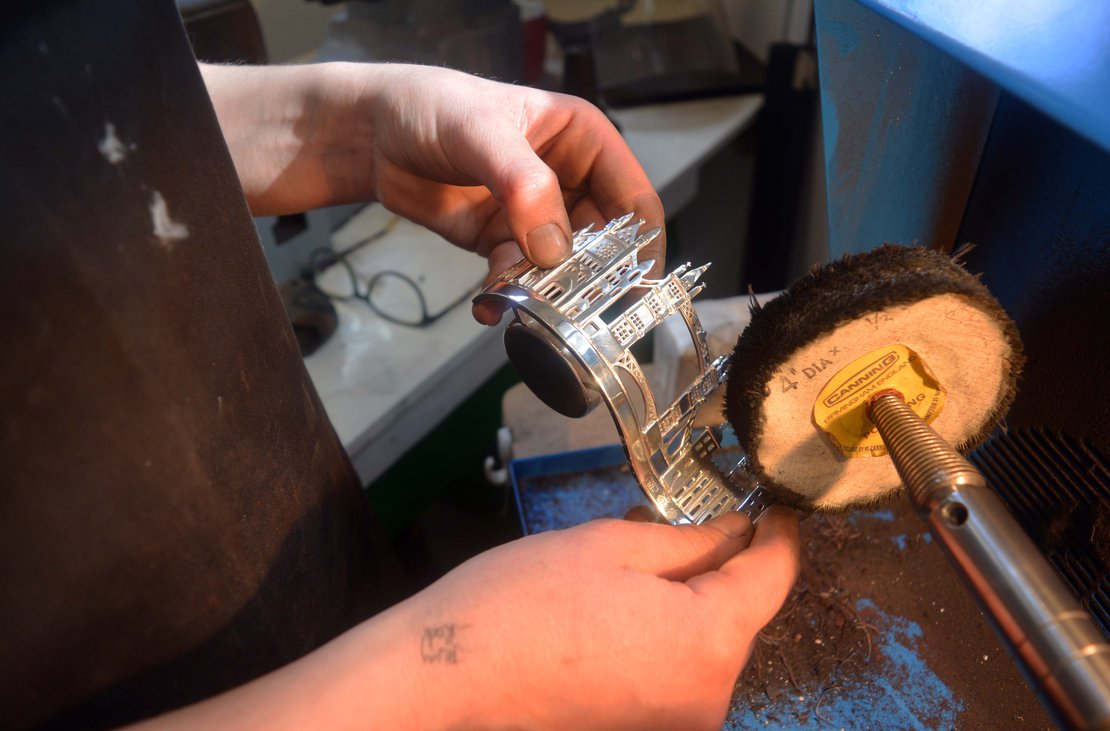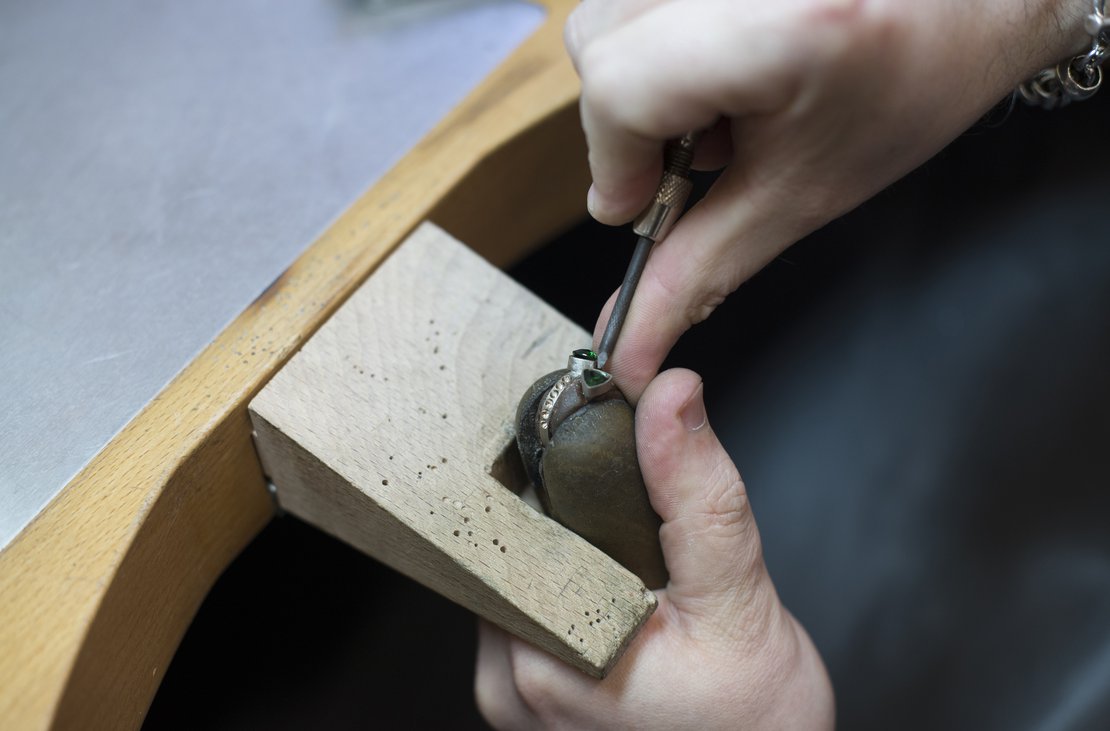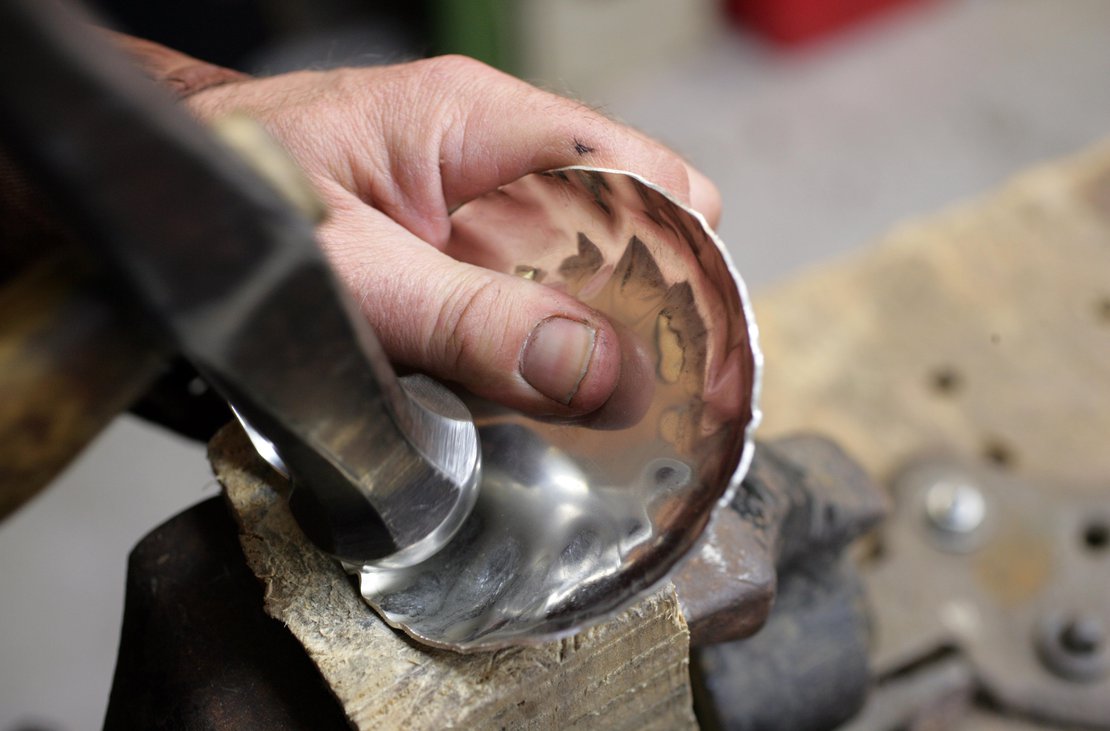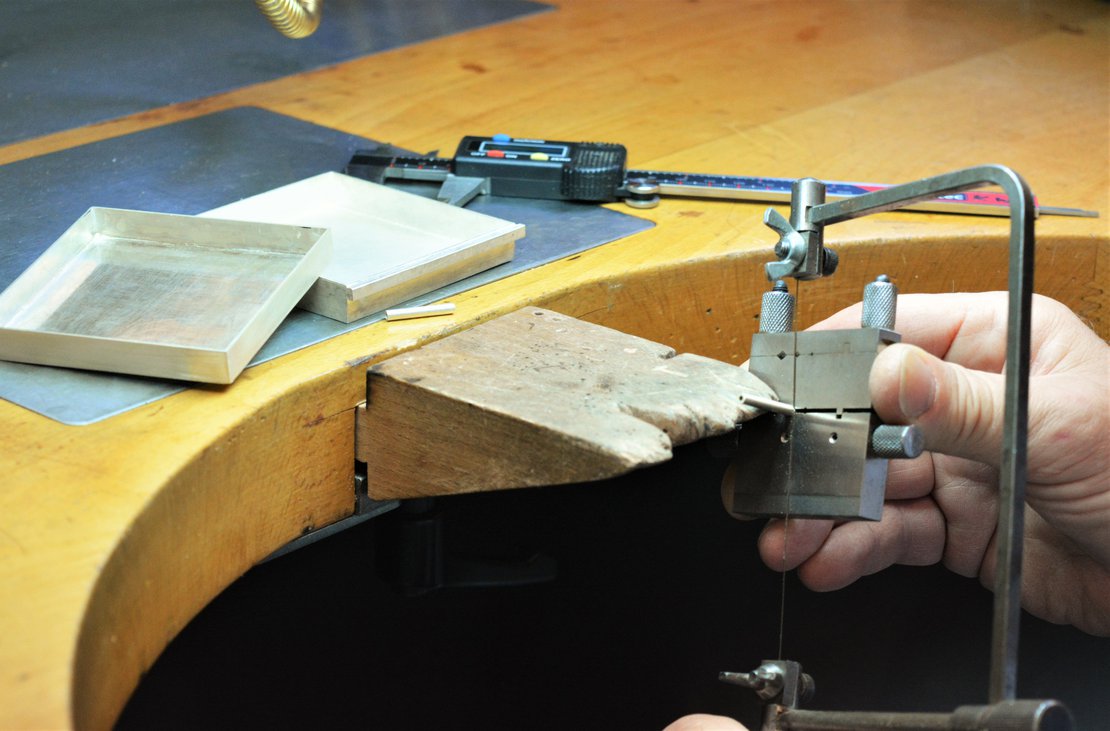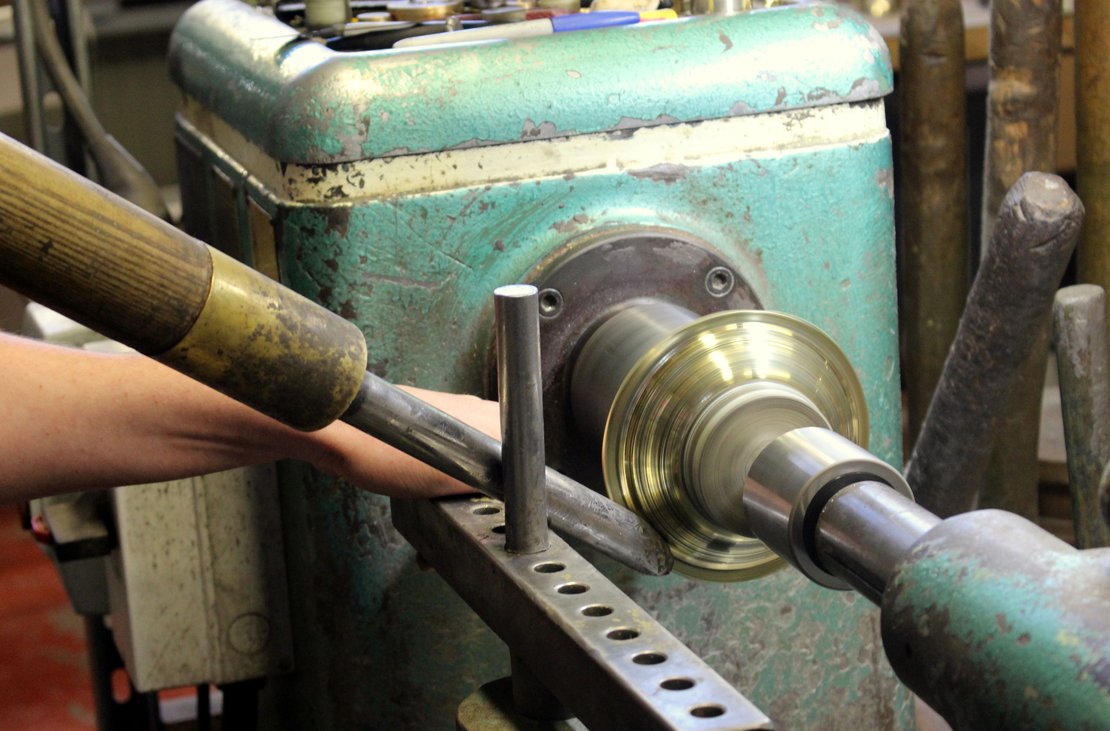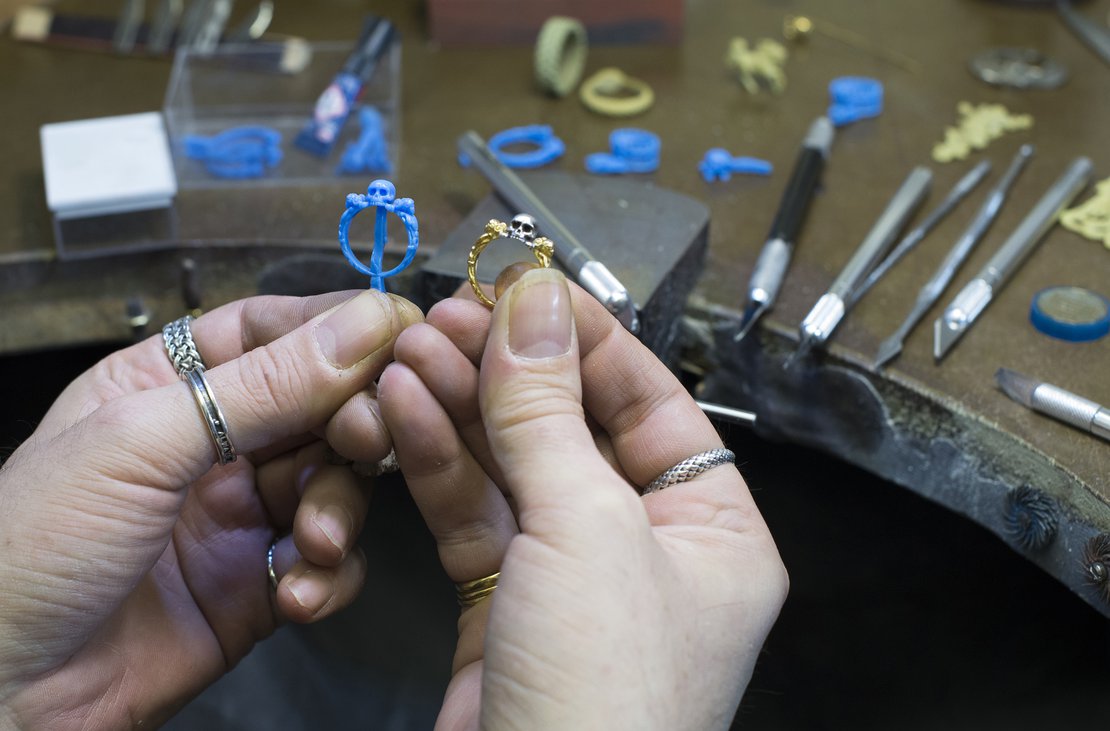Designer
A designer turns inspiration into fully visualised concepts according to a set brief and presents these as sketches, working drawings, renders and painted designs to their client.
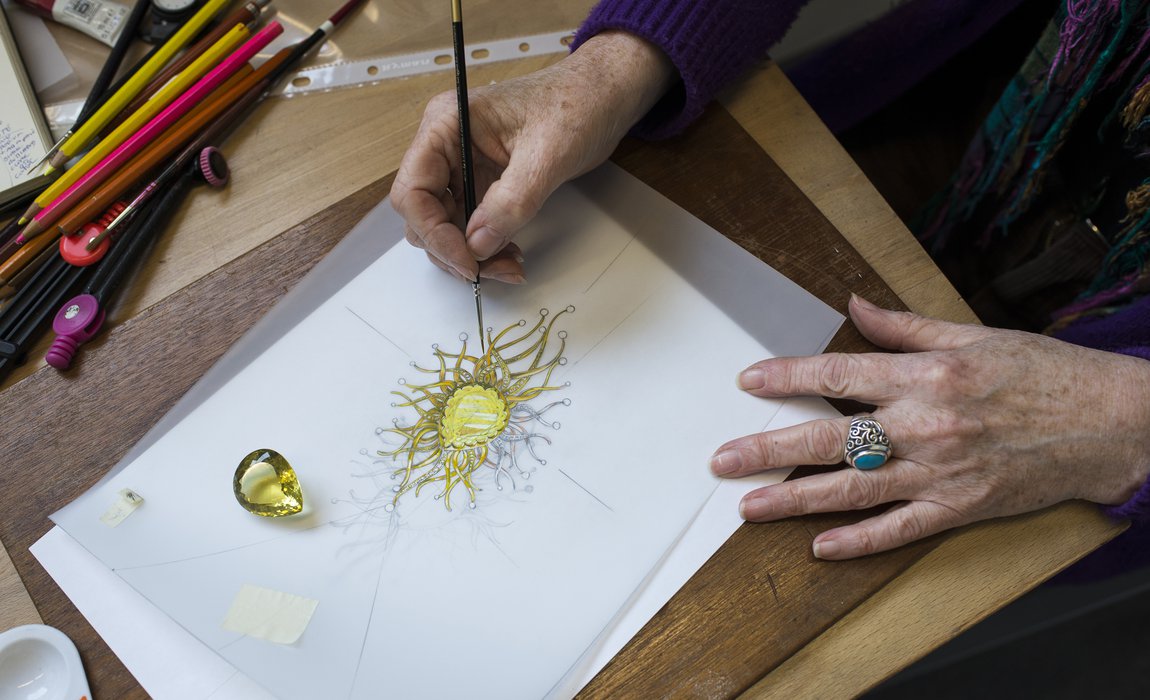
The designs may use precious metals and gemstones and can be made into jewellery, silverware or accessories by a goldsmith. Designers must be able to convey their designs in a range of appropriate ways depending on the client, type of work and materials being used.
“David Mellor is regarded as one of the most accomplished silverware designers, cutlery manufacturers, craftspeople and retailers in recent history. He also designed the traffic lights that we use in the UK today.”
What personal attributes are useful for a designer?
To be a designer you need to be:
- Creative, artistic, have a flair for design and excellent drawing skills. A solid understanding of CAD will also be of use
- Inspired by the world around you or by the subject provided - you will also need to be good at research and be able to select appropriately from your results
- Passionate for the specialism you are designing for
- Detail oriented, with the ability to be precise
- Able to understand and interpret a client’s brief successfully and translate this into a range of suitable items which can be made. Identifying and understanding your client is also important
- A good communicator; you need to be able to explain or present your designs to other craftspeople or clients confidently and with clarity
- Knowledgeable in precious metals and gemstones, as you will be including these materials in your design
- Able to problem solve with a good understanding of suitable construction and production methods
- Able to create new collections in response to the market, trends and forthcoming event
You would benefit from having some goldsmithing skills so that you understand what materials, processes and construction to use within the final piece. You do not need to be as fast or proficient as a craftsperson, but you need to be able to create striking designs that can be made. Some designers may model their ideas during the development phase in order to help them visualise the finished piece. You will benefit from studying designs by other craftspeople and historic examples in museums or galleries.
What will my working life be like as a designer?
Designers might be self-employed or employed as a House Designer. If you work for a company you are part of a bigger team, earn a wage and have a fixed working schedule, normally from Monday to Friday. It is common practise for all designs produced by you whilst employed to belong to the company you work for. If you are self-employed you may work from home or share a studio with other craftspeople, and you may engage directly with customers to create bespoke pieces.
As a self-employed designer, you might be approached by a company or individual client to create designs for them or you might decide to design and get your own pieces made. In this case you will need to develop good business, finance, marketing and interpersonal skills as well as having good relationships with a variety of craftspeople. Self-employed designers may work on commission, be paid a retainer for their services by a company or use a mixture of both.
A designer may choose to specialise in designing accessories, jewellery, silverware, regalia or a range of other associated items. Each of these items will have their own customers, pricing structures, selling outlets and manufacturing requirements. To be a successful designer you will need to know and understand each of these.
Within your work you must be able to adhere to industry health and safety requirements; understand the safe storage, handling and disposal of chemicals, paints and modelling materials used in the studio or workshop and know how to safely operate and maintain your materials. Many designers will use CAD and digital software as part of their design process. Understanding how to produce and alter your designs using a range of different software will help. As technologies are changing fast you will need to continually develop your CAD skills.
As a designer you will use skills and techniques including designing a piece or pieces of jewellery / silverware / regalia or accessories in accordance with drawn, verbal or written Instructions; apply design skills and presentation techniques to fulfil design requirements; execute to the dimensions given and have high quality visual presentation skills; use appropriate drawing, painting, modelling mediums and materials as well as relevant CAD technology; use a range of freehand drawing skills, model making, working drawings including scale and accuracy, painting and presentation skills including the use of an airbrush and renders; and CAD skills.
You will find it useful to maintain a working knowledge of a range of goldsmithing techniques, precious metals, their alloys and solders. Having an understanding of the history of design and the various styles is also key in developing a design language and style.
You can expect to work with a range of papers including tracing paper, cartridge paper, graph paper, canson paper, air brush paper, presentation and mount board; paints; inks and modelling materials. And you will learn how to use tools including artists materials; an airbrush; modelling materials; and CAD and CAM software. You should receive training in all of these as required.
A day in the life of a designer - Gabriela Kurcharska
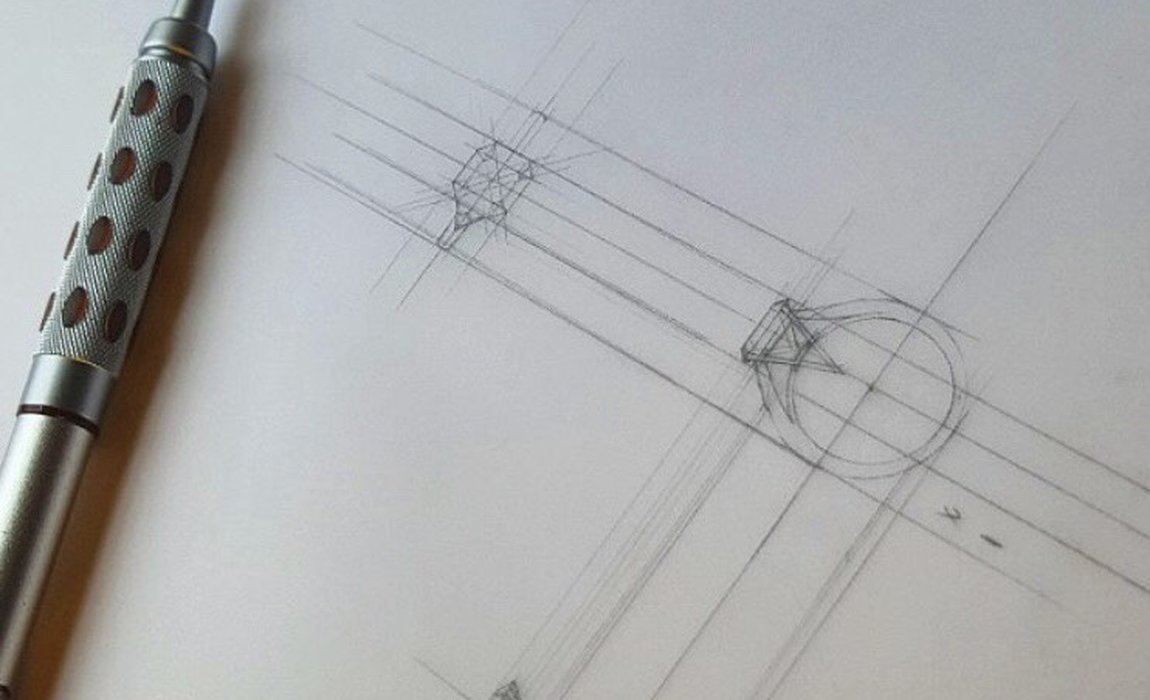 Working on a to-scale technical drawing of a ring
Working on a to-scale technical drawing of a ring
 Starting off the design process with a few sketches
Starting off the design process with a few sketches
 Painting up a design for presentation to a client
Painting up a design for presentation to a client
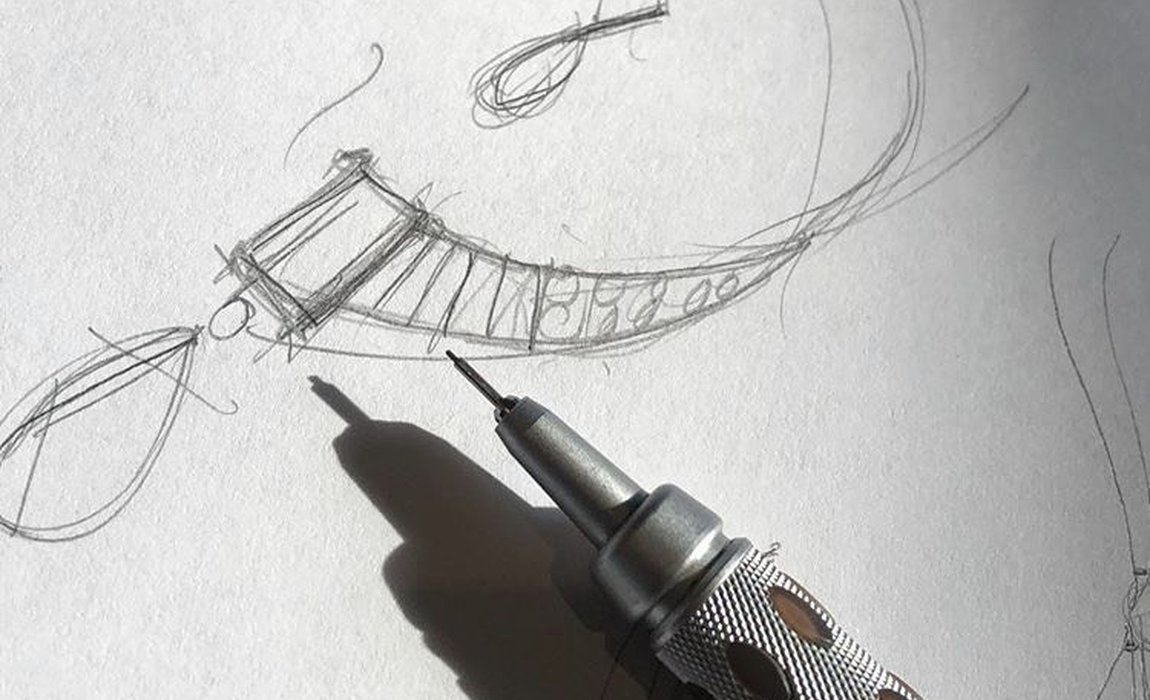 Quick sketch of an earring idea
Quick sketch of an earring idea
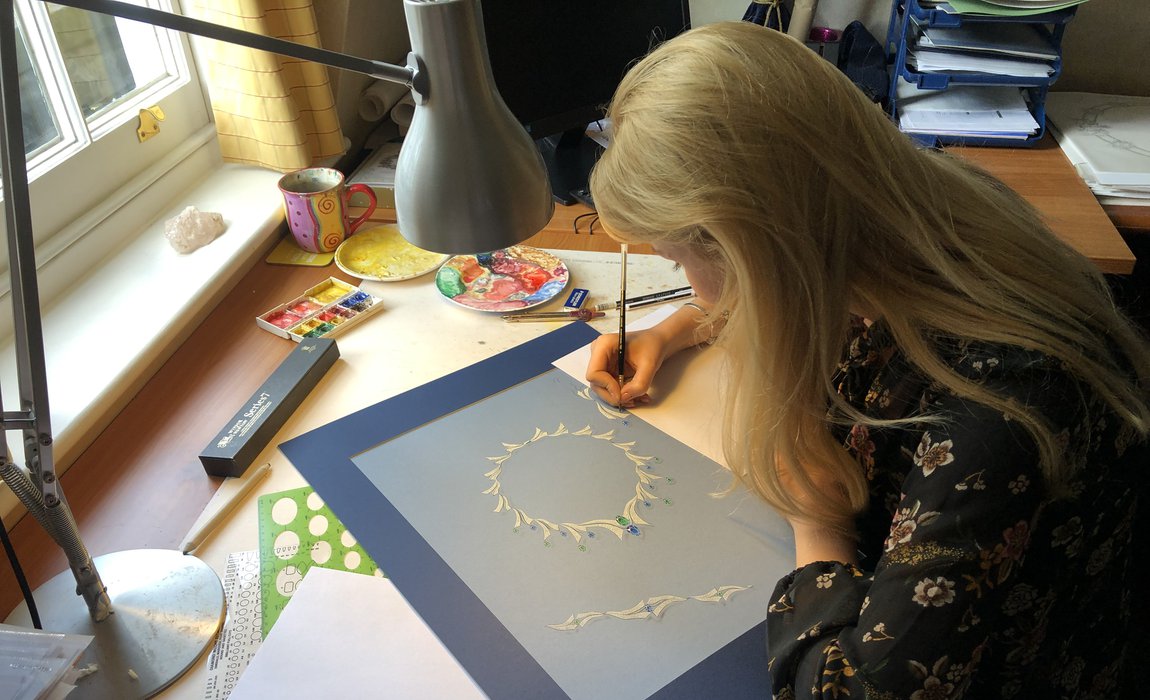 Finishing off painting up a design
Finishing off painting up a design
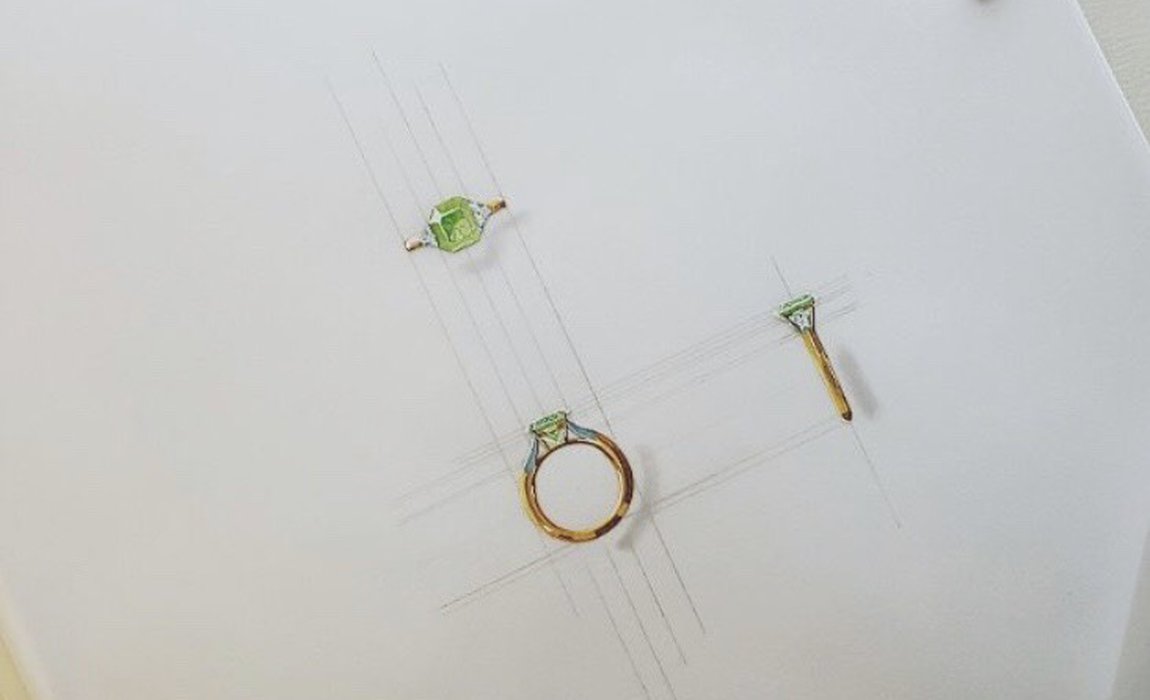 A finished three-projection ring design to send to the client
A finished three-projection ring design to send to the client
Training or qualifications: How can I become a designer?
There is no set career path to become a designer, but you will have an aptitude for design and artistic subjects. Typically, you will need to understand the making process and you can learn about this through an apprenticeship or course. Practical training is essential as well as a commitment to learn continuously from those that are more skilled.
There are several ways to start out in the jewellery, silversmithing and allied industries. To become trained as a designer you may choose to go straight into a job, apprenticeship or relevant course at a college, university or training centre. There are very few skill-specific qualifications available, but many courses provide an introduction to a range of creative skills. To find out more about different options and your potential route into a creative career within the goldsmithing industry click here.
What can I earn as a designer?
As an apprentice or someone who is training you should be paid at least the National Minimum Wage for your age and this rate should increase as you get closer to completing your training. Apprentices undertaking traditional training may start out earning around £12,000 – £13,000 per year and be closer to £17,000 – £18,000 at the end of their four-year apprenticeship. Once you have completed your training your earnings will vary depending on your skill and employment status.
Designers who work with jewellery, silverware or regalia can often be paid a similar wage. As an accessories designer you may be paid less depending on the type of pieces being designed and the quality of the materials being used, especially if your designs do not use precious metals or gemstones.
Salaries for an employed, in-house, designer can start at around £22,000 - £25,000 per year in the first few years after training. This can rise to £35,000 - £40,000 for mid-career designers and can reach £60,000 - £100,000 as a Creative Director supervising other designers within a top design house. Some companies may also give bonuses.
If you are self-employed, being a designer can be well paid if you have regular clients or constant sources of work, but it can be difficult if you are commissioned ad hoc. As a designer you may work on a retainer basis, where you are paid an agreed amount per month in order to be available to a company when needed. Alternatively, designers can work on a commission basis and agree a fee per job, per hour or per day. Rates for this will depend on your experience, the type or complexity of the piece and the type of presentation required by the client. No matter how you work your reputation is extremely important as the goldsmithing industry often operates on word of mouth recommendations and trust.
What industry membership bodies can I join?
offer a range of membership options for people at different stages of their career. Joining a membership body or keeping up to date with industry events allows you to create a network with like-minded individuals. Keeping up to date with hallmarking legislation will be useful if you are interested in working for an Assay Office. See for example:
Meet the makers

When I travel I take a little booklet with me, and if I see something of interest, I sketch it. It can be anything - like a window, a building, a bird, an animal. It might not be used immediately, but I'll return to it after a few days or weeks and it gives me more ideas and inspiration.
Gabriela Kucharska
Read our interview with design apprentice, Gabriela KurcharskaExamples of design
The Goldsmiths’ Company Collection includes over 8,000 pieces of antique, domestic & contemporary silver, jewellery and art medals which were made in Britain between 1350 and the present day. The Company continues to purchase, and commission pieces each year and new contemporary pieces must demonstrate innovative design combined with excellent craftsmanship. Pieces are acquired from both established craftspeople and rising stars.
 Christopher Dresser, Claret Jug, 1880 © Collection: The Worshipful Company of Goldsmiths
Christopher Dresser, Claret Jug, 1880 © Collection: The Worshipful Company of Goldsmiths
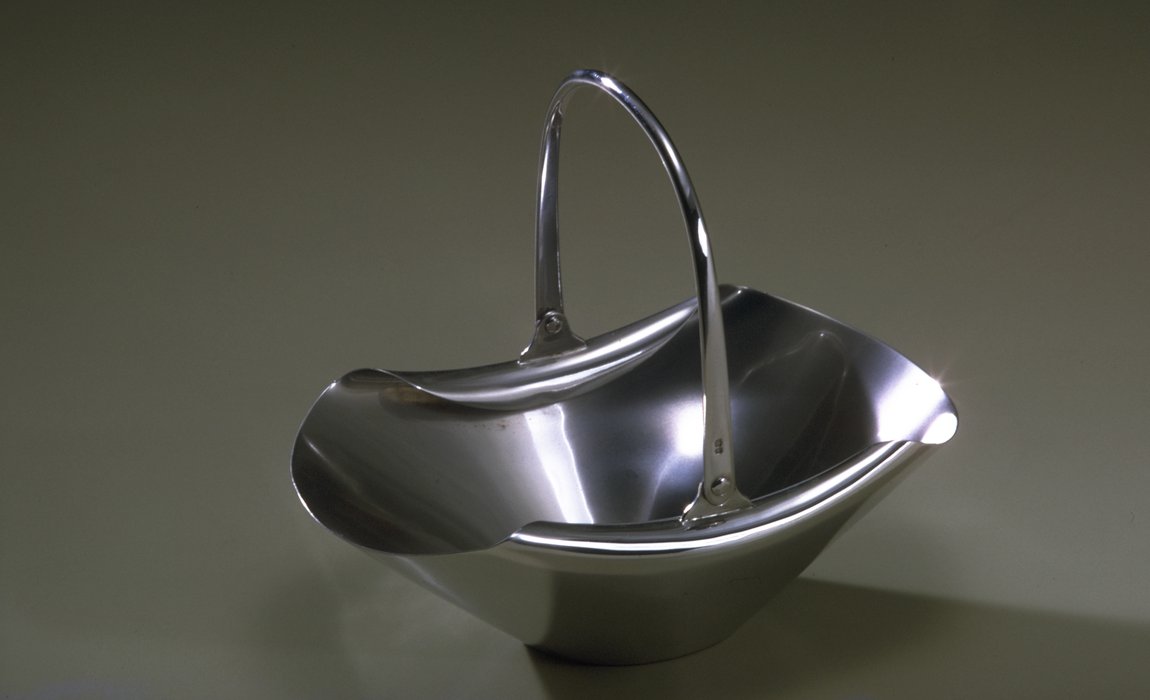 Christopher Dresser, Basket, 1882 © Collection: The Worshipful Company of Goldsmiths
Christopher Dresser, Basket, 1882 © Collection: The Worshipful Company of Goldsmiths
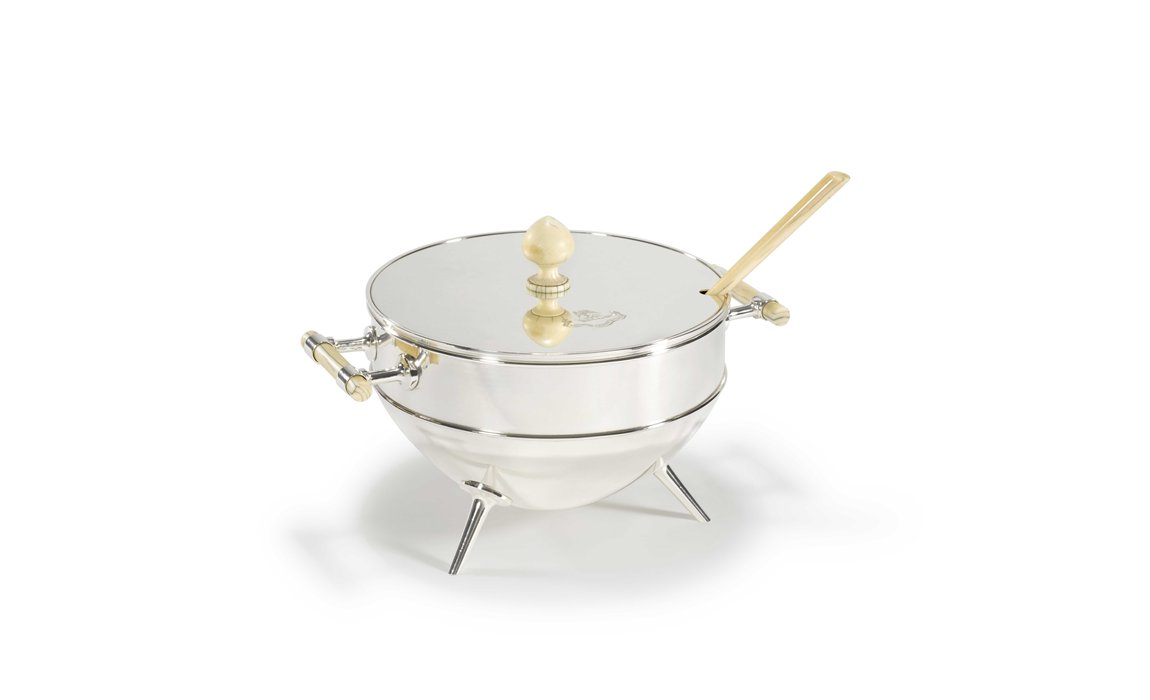 Christopher Dresser, Soup Tureen, c.1880 © Collection - The Worshipful Company of Goldsmiths
Christopher Dresser, Soup Tureen, c.1880 © Collection - The Worshipful Company of Goldsmiths
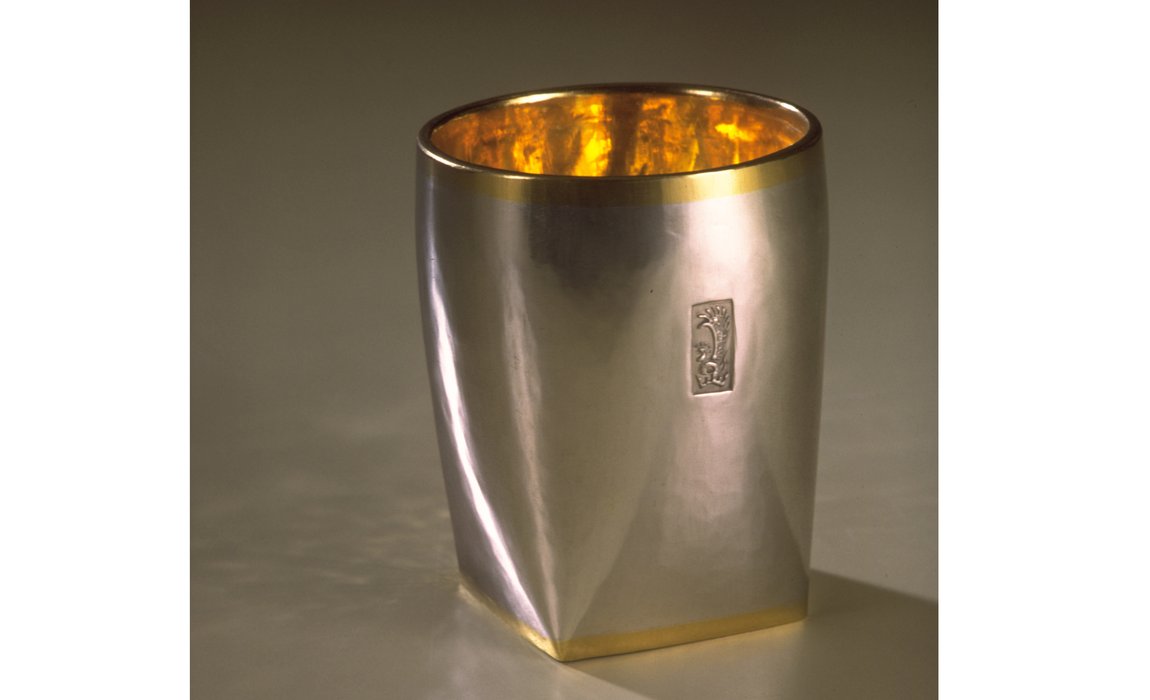 Louis Osman, Hely Hutchinson Tumbler, 1969 © Collection: The Worshipful Company of Goldsmiths
Louis Osman, Hely Hutchinson Tumbler, 1969 © Collection: The Worshipful Company of Goldsmiths
 Henning Koppell and Georg Jensen, Fish Platter, 1969 © Collection: The Worshipful Company of Goldsmiths
Henning Koppell and Georg Jensen, Fish Platter, 1969 © Collection: The Worshipful Company of Goldsmiths
The Goldsmiths’ Company also retains an image archive of Masterpieces created by apprentices in their final year on the . These pieces take around 350 hours to make and demonstrate the skills learnt throughout an apprentice’s training. A selection of these pieces, which demonstrate lapidary, can be seen here:
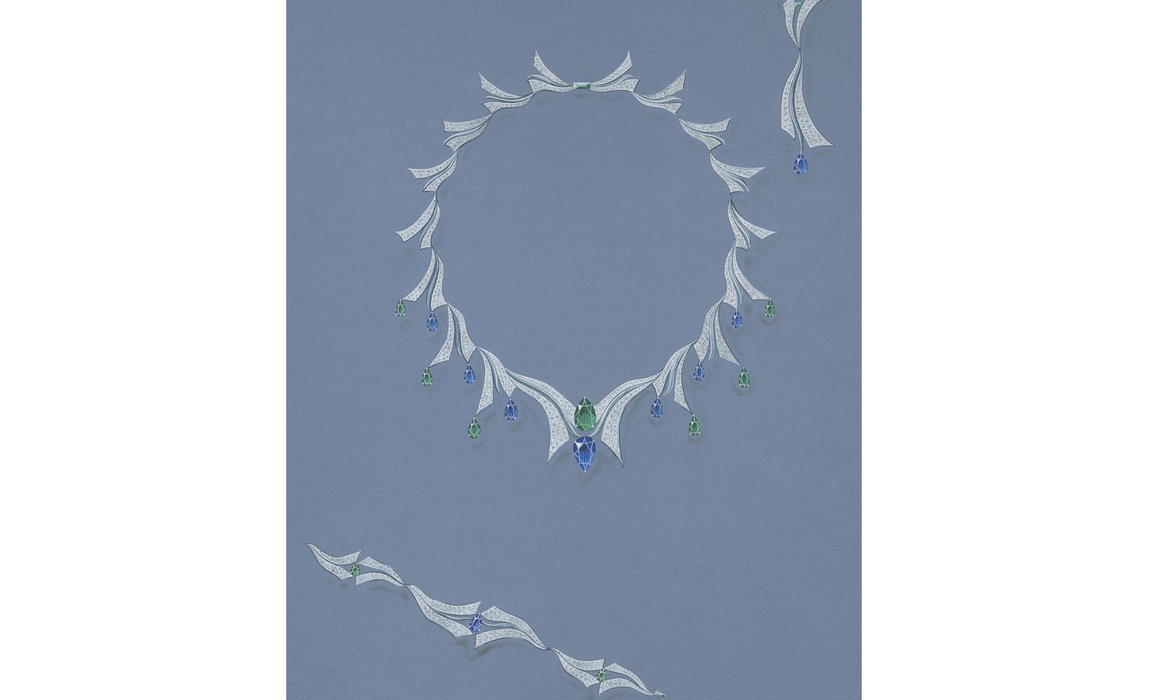 Gabriela Kucharska (Barry Moss, Cleave & Co Ltd) - Portfolio of design work - Wave after wave © The Goldsmiths' Company 2019
Gabriela Kucharska (Barry Moss, Cleave & Co Ltd) - Portfolio of design work - Wave after wave © The Goldsmiths' Company 2019
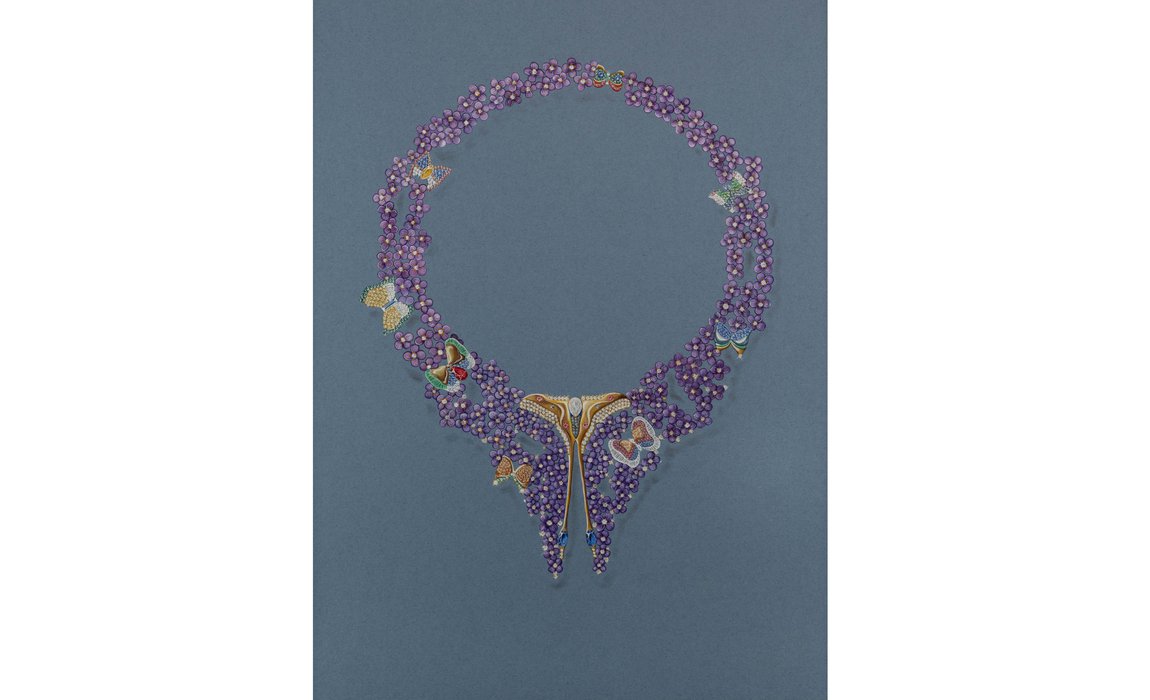 Gabriela Kucharska (Barry Moss, Cleave & Co Ltd) - Portfolio of design work - Papillon © The Goldsmiths' Company 2019
Gabriela Kucharska (Barry Moss, Cleave & Co Ltd) - Portfolio of design work - Papillon © The Goldsmiths' Company 2019
 Gabriela Kucharska (Barry Moss, Cleave & Co Ltd) - Portfolio of design work - Papillon © The Goldsmiths' Company 2019
Gabriela Kucharska (Barry Moss, Cleave & Co Ltd) - Portfolio of design work - Papillon © The Goldsmiths' Company 2019
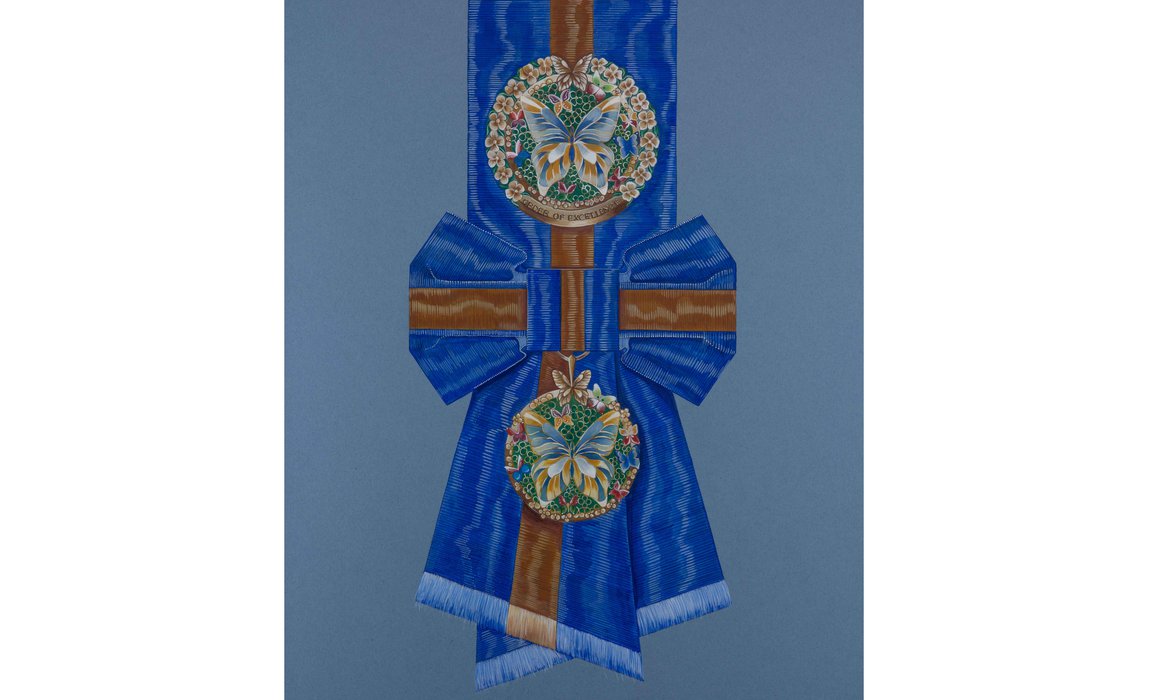 Gabriela Kucharska (Barry Moss, Cleave & Co Ltd) - Portfolio of design work - Order of Excellence © The Goldsmiths' Company 2019
Gabriela Kucharska (Barry Moss, Cleave & Co Ltd) - Portfolio of design work - Order of Excellence © The Goldsmiths' Company 2019
Further Information
There are many reputable sources of information relating to the jewellery, silversmithing and allied industries. Whether you are trying to find information on technical skills, processes, materials, makers or inspiration some resources relating to design can be found below:
The Goldsmiths’ Company Library relates specifically to gold and silversmithing, jewellery, assaying and hallmarking, precious metals, and the City of London and its guilds. The Library includes 8,000+ books and 15,000+ images, magazines, periodicals and journals, technical guides, films, special research collections, design drawings produced during the early and mid-twentieth century by British or UK-based craftspeople and subject files on a wide range of industry related topics. The Library is also responsible for the Company’s archives, which date back to the 14th century.
Design related books include:
- The Goldsmiths’ Company Archive
- Adolfo Mattiello, Techniques of jewellery illustration and colour rendering, New Jersey, Du-Matt Corporation, 1995
- Liz Olver, The Art of Jewellery Design: From Idea to Reality, London, A & C Black, 2004
- Carol Woolton, Drawing jewels for fashion, London, Prestel, 2011
Design related film content includes:
I've always enjoyed more creative subjects like art and design
Gabriela Kucharska – Fine Jewellery Design apprentice with Cleave & Co.
